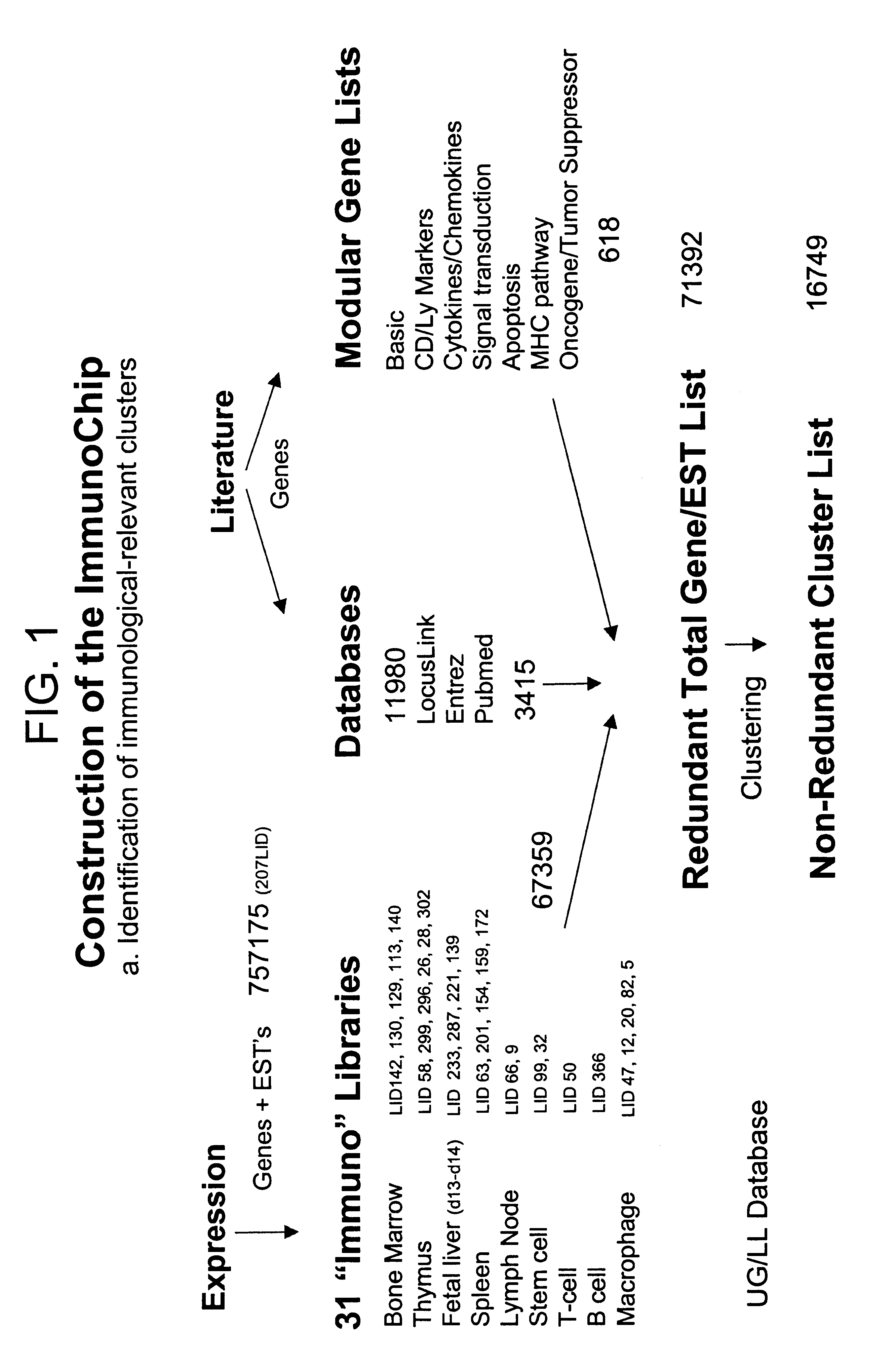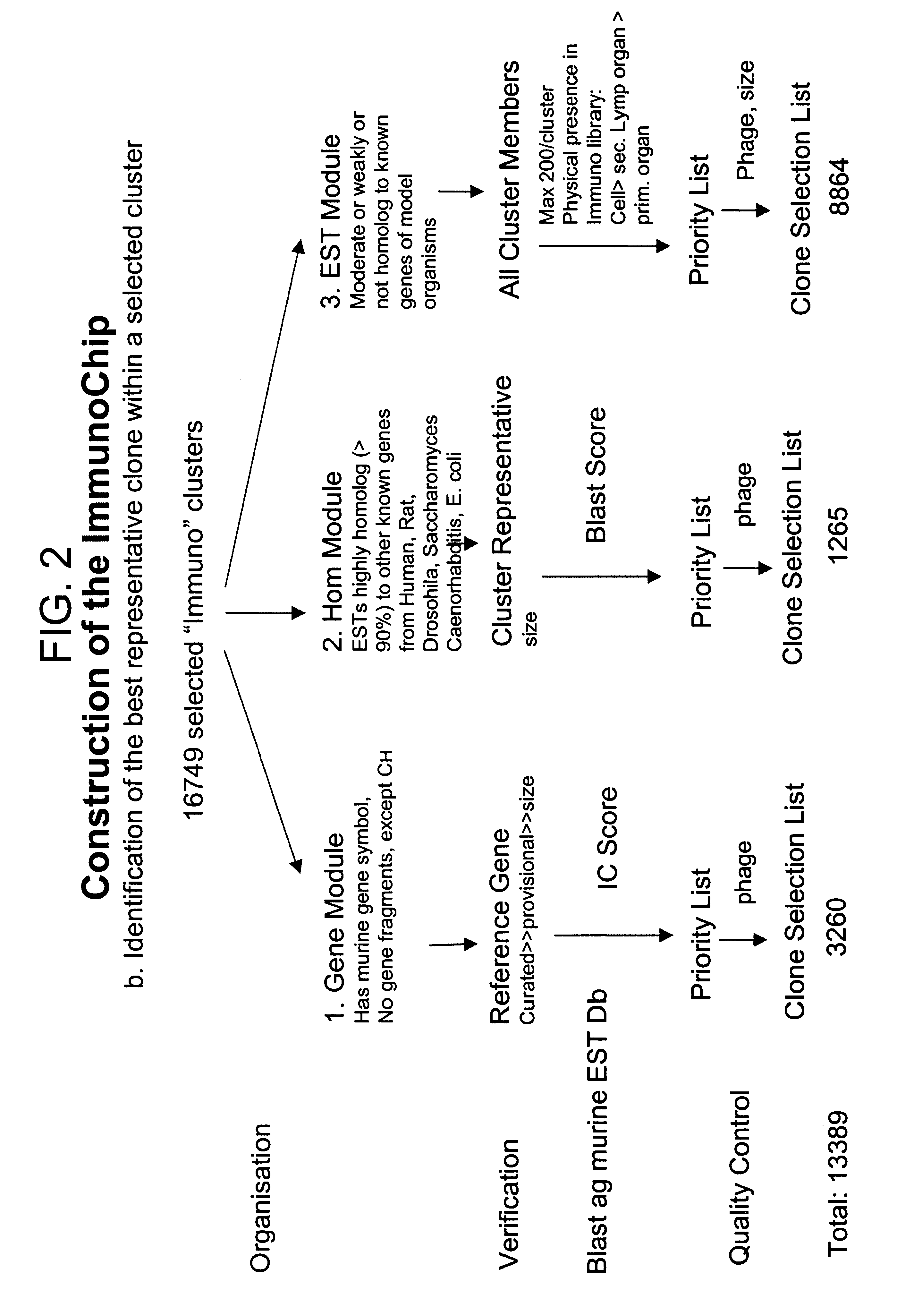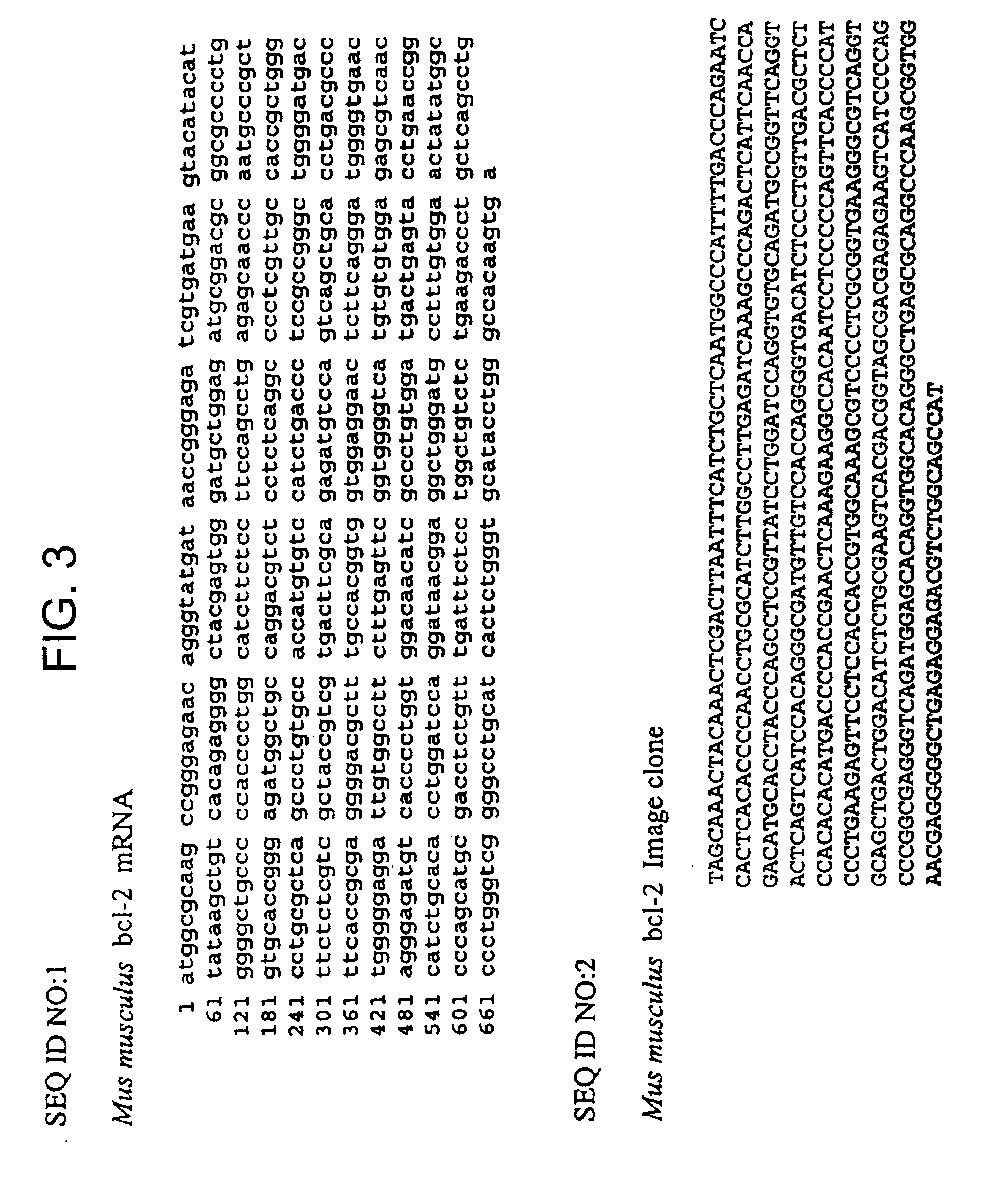DNA array sequence selection
a technology of array sequences and sequences, applied in the field of dna array sequence selection, can solve the problems of autoimmune diseases, most immunologically based diseases have not been well characterized in regard to specific b and t cell clones
- Summary
- Abstract
- Description
- Claims
- Application Information
AI Technical Summary
Benefits of technology
Problems solved by technology
Method used
Image
Examples
example 2
Identification of the Best Representative Clone Within the Selected Immunologically Relevant Cluster
1. Categorization of Selected Clusters into Modules
The 16749 selected immunologically relevant clusters were categorized into one of three modules: the gene (GENE) module, the homologous gene (HOM) module and the EST module (See, FIG. 2 for a flow chart of this method). A record was classified as gene, if the cluster was named and had at least one named sequence information including gene name or symbol in it. However, gene fragments such as B cell or T cell variable gene fragments and fragments generated by virus integration but not CH gene fragments (isotypes) were excluded from the gene module. In addition, records with a gene name and or a gene symbol were excluded from the module, if a gene sequence was not identified yet. A record was categorized into the HOM module, if the murine EST was highly homologue (>90% homology) to other known genes of the species Homo sapiens, Rat, Dro...
PUM
| Property | Measurement | Unit |
|---|---|---|
| surface area | aaaaa | aaaaa |
| thicknesses | aaaaa | aaaaa |
| wavelength | aaaaa | aaaaa |
Abstract
Description
Claims
Application Information
 Login to View More
Login to View More - R&D
- Intellectual Property
- Life Sciences
- Materials
- Tech Scout
- Unparalleled Data Quality
- Higher Quality Content
- 60% Fewer Hallucinations
Browse by: Latest US Patents, China's latest patents, Technical Efficacy Thesaurus, Application Domain, Technology Topic, Popular Technical Reports.
© 2025 PatSnap. All rights reserved.Legal|Privacy policy|Modern Slavery Act Transparency Statement|Sitemap|About US| Contact US: help@patsnap.com



